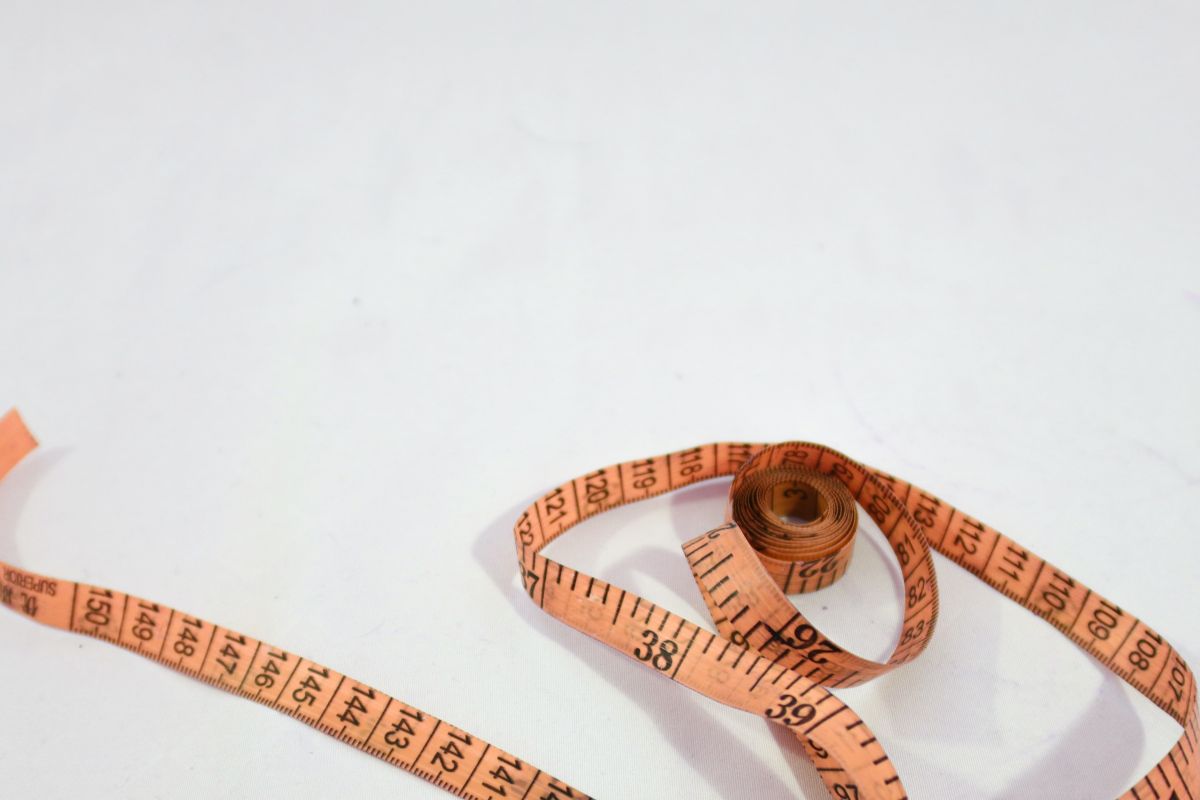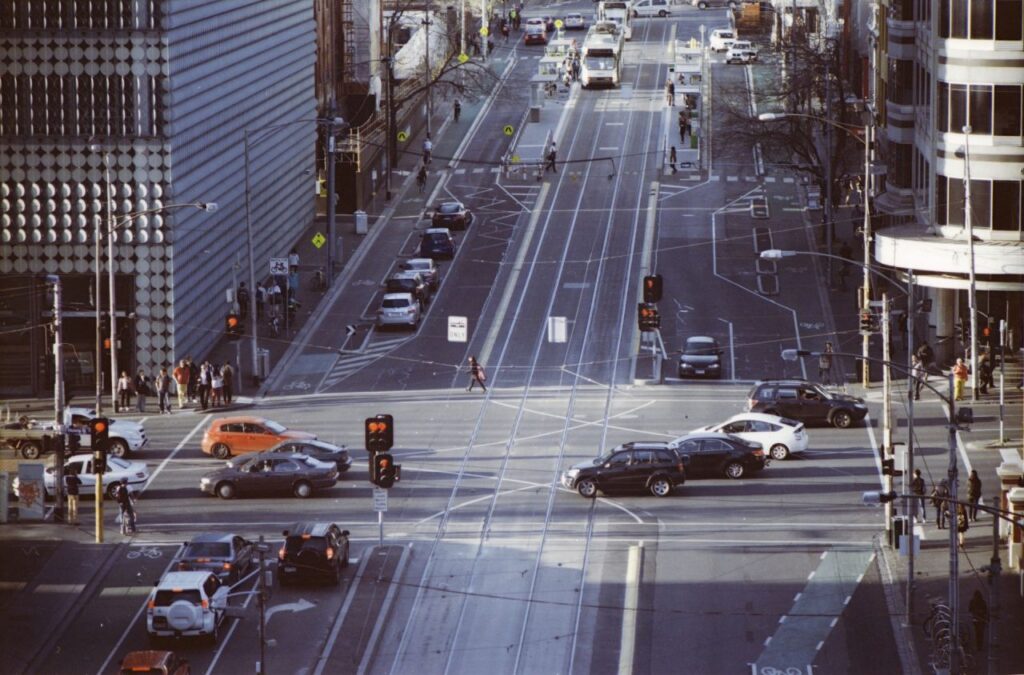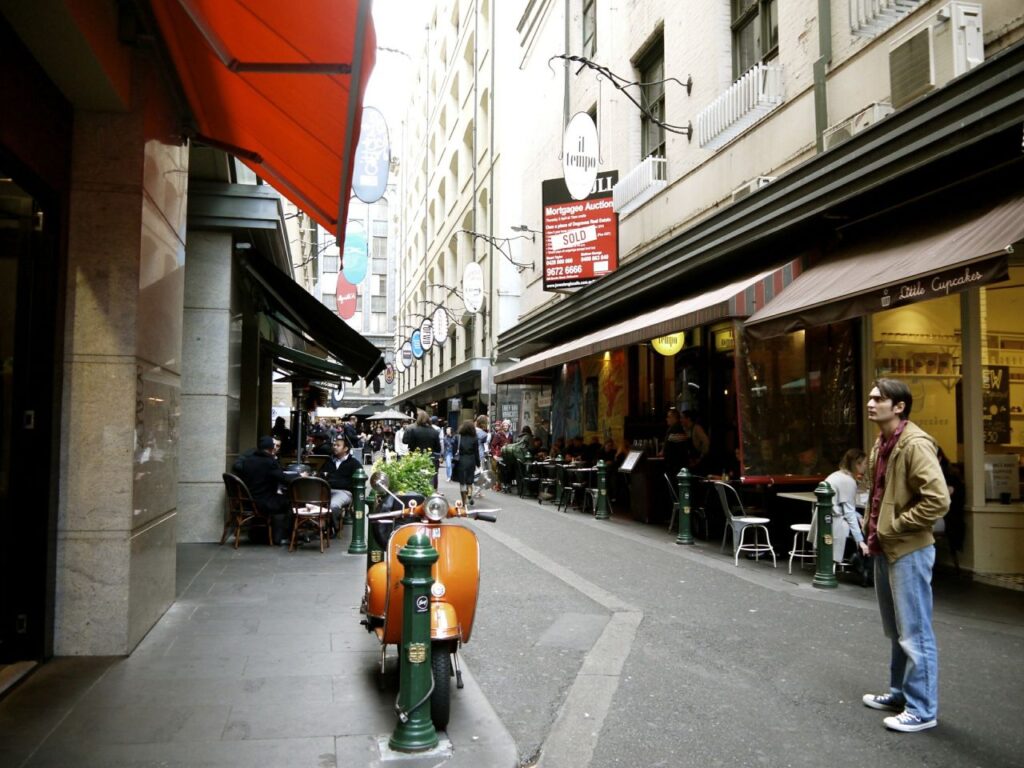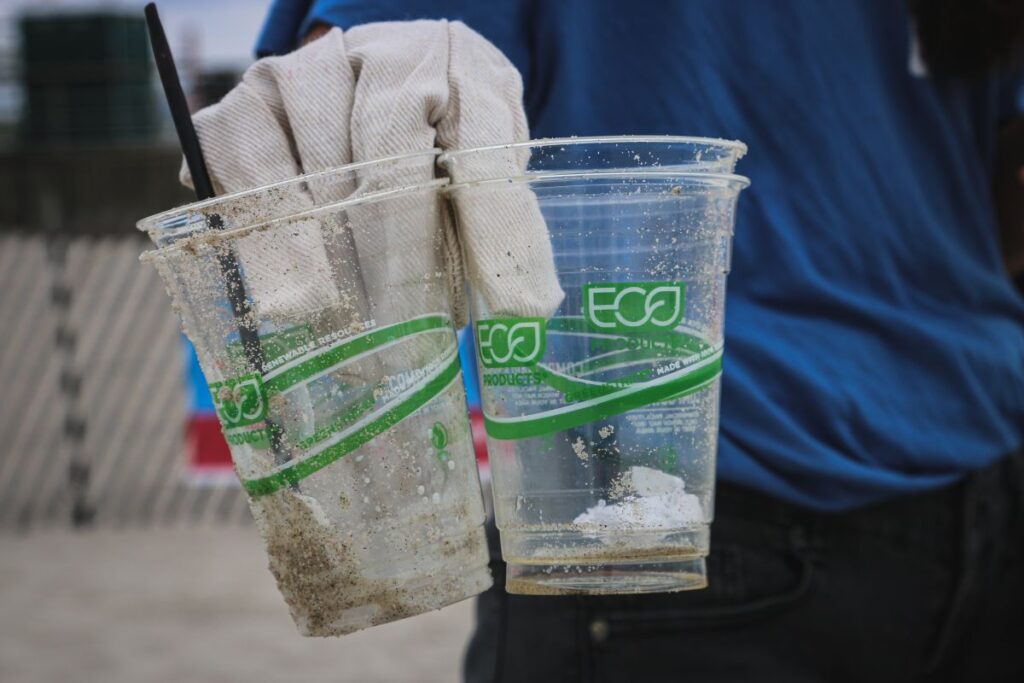The use of recycled polyester in the fashion industry is on the rise, but not everyone is convinced that the material is a sustainable long-term answer. Polyester, a synthetic polymer derived from petroleum, has also been shown to have negative effects on the environment. As a result, several businesses and retail outlets have been pushing recycled polyester as a greener alternative.
Sustainable sourcing is important to companies like Marine Layer, American Eagle, and Inditex (Zara's parent business), and they all point to their usage of recycled polyester as evidence of this commitment. The parent company, Gap Inc., has followed suit with its subsidiaries Gap, Athleta, Old Navy, Intermix, and Banana Republic. As examples, consider sustainability heavyweights Patagonia and Outdoor Voices; both are familiar with the phenomenon. In the fashion business, the fabric has come to represent a commitment to "sustainable" principles. But how sustainable is polyester that has been recycled?
First Thing's First: What Is Recycled Polyester?
Recycled polyethylene terephthalate (rPET) is the technical term for this type of fibre. Recycled PET (rPET) is the same manufactured fibre as non-recycled PET; the only difference is that rPET is made using recycled materials rather than virgin ones. Polyester, a plastic polymer, can also be melted down and repurposed into new forms over and over again without losing its strength or durability, allowing for this kind of versatility.
Polyester's thermoplasticity makes it a natural choice for recycling efforts, and many popular brands have taken notice. There has been a flurry of activity from Aerie to Zara to include it in their latest lines. Some companies have even committed to completely switching from using virgin polyester to using recycled polyester (rPET) by a specified date, including Inditex, Adidas, and Reebok. (That year will be 2025 for Inditex and its subsidiaries like Zara, and 2024 for Adidas and Reebok.)
FAQ
Reducing plastic waste—especially that which ends up in our oceans and waterways—is an excellent and worthy goal (necessary, in fact). But the mechanical recycling process that turns plastic bottles into rPET garments effectively negates the recycling goal and prevents them from being recycled in the same manner again.
Even though the manufacturing process uses less energy and has a lower carbon footprint than virgin PET, the end-of-life for rPET pretty closely matches that of any other non-recyclable you'd throw away. So Aka is sitting in a landfill, biodegrading at a staggeringly slow rate.
Another angle to the pitfalls of rPET is a vice common to fabrics of all kinds: microfiber shedding. Of course, in the washing process, all textiles will shed micromaterials. But the fibres from synthetic fabrics, like polyester, pose a greater risk than others. Circles in the scientific community call this synthetic debris "fibrous microplastics," which sounds sinister even if you don't know the harm microplastics do to marine species and habitats.
These microfibers that slough off in the wash and enter oceans and other bodies of water can be easily mistaken by aquatic creatures for food—a risk well-documented by numerous studies on the number of microplastics in fish and sea life. Besides that, there's also concern that chemicals used in the manufacture of plastics are now being introduced to marine ecosystems by the inundation of plastics into the Environment—a problem that will persist whether the source synthetic fabric was recycled.
None of this is to say that brands and companies should not use rPET. As mentioned, the production of recycled material is far better for the Environment than its non-recycled counterpart derived from fossil fuel. However, it does mean that rPET needs to be a sustainable or sufficient end goal for transforming the fashion industry.
The approach to sourcing material for rPET and the effects of synthetic fibre shedding on marine environments must be carefully re-evaluated before companies can congratulate themselves on their sustainable values. In addition, more conscientious closed-loop sourcing methods—and a major expansion of textile-to-textile recycling—are needed before rPET can be called a truly green alternative.
The appeal is clear: Recycled polyester, also known as recycled polyethylene terephthalate or rPET, has a smaller carbon footprint than its virgin counterpart. In addition, reclaiming plastic waste keeps it from becoming trash—or fodder for marine animals such as turtles and whales.
Although companies frequently market shoes and clothing made with rPET as a guilt-free way to consume fashion, only some are convinced of its virtues. So here are the top things you need to know before deploying rPET into your lineup.
Due to the predominance of plastics in their construction, synthetic fibres take significantly longer. For example, fabrics made of nylon take 30 to 40 years to degrade, whereas fabrics made of lycra and polyester take 500 years or more.
Recycled polyester has almost the same qualities as virgin polyester. However, it delivers major benefits to the environment instead of those drawbacks. It is long-lasting, lightweight, resistant to creases, colourfast, quick-drying, stain resistant, eco-friendly, and inexpensive.
Recycled Polyester: Pros And Cons
The Pros
Preventing waste plastic from entering landfills and waterways - Recycling polyester extends the useful life of a nonbiodegradable material. The alternative is to have it dumped in landfills or flushed down the drain. It is believed that there are currently around 150 million metric tonnes of plastic floating around in marine habitats, and the non-governmental organisation Ocean Conservancy claims that another 8 million metric tonnes of plastic are added to the ocean each year. If we keep going at this rate, there will be more rubbish than fish in the ocean by 2050. Sixty percent of all seabirds and one hundred percent of all sea turtle species have plastic in their stomachs from mistaking it for food. Creating new products from plastic trash is crucial for people and the planet.
Recycled PET (rPET) is an excellent replacement for virgin polyester that requires fewer resources in its production. Polyester made from recycled materials is nearly as high-quality as virgin polyester. 2017 research by the Swiss Federal Office for the Environment found that its manufacture used 59% less energy than virgin polyester. According to WRAP's calculations, producing rPET results in 32% fewer CO2 emissions than producing conventional polyester. Let's pretend we're conducting life cycle analyses. The results of RPET were much higher than those of pure PET.
Additionally, polyester made from recycled materials might lessen the demand for fossil fuels in the plastics manufacturing process. Patagonia, a popular outdoor brand that is known for making fleece out of recycled soda bottles, useless manufacturing waste, and worn-out clothes, boasts on its website that "using recycled polyester decreases our dependence on petroleum as a source of raw materials." It lessens waste, which means landfills can be used for a longer period of time and incinerators can release fewer harmful gases. It also aids in the dissemination of information regarding the development of new recycling channels for outmoded polyester garments.
Developing a non-virgin production process for polyester fibre does have potential to affect global resource and energy requirements massively, as argued by American clothing brand Nau, also known for prioritising sustainable fabric options. Polyester accounts for approximately 60% of the world's production of PET, which is about twice what is used in plastic bottles. The shoe company Allbirds is well-known for its eco-friendly footwear and employs shoelaces made from recycled plastic bottles.
The Cons
There are constraints on recycling because many clothing are constructed from a combination of polyester and other materials. Because of this, recycling them becomes more complicated, if not impossible.
Blending with polyester and cotton is technically feasible. However, it has not advanced past the test-flight stage. Finding processes that scale well is difficult, and we haven't mastered it yet. Not all fabrics can be recycled because they have been laminated or finished in a particular way.
You can only recycle polyester clothing so many times. PET can be recycled in one of two ways: mechanically and chemically. By washing and shredding plastic bottles, mechanical recycling can transform them back into polyester chips for use in the conventional fibre-making process.
Chemical recycling reduces waste plastic to its component monomers, making it chemically equivalent to new plastic. These leftovers can be recycled into the polyester production stream. Mechanical recycling is widely used to create rPET since it is less expensive than chemical recycling and does not require any chemicals beyond those used to clean the input materials. However, this process often weakens the fibre, requiring the insertion of new fibre to restore its original strength.
The common perception is that plastics can be recycled indefinitely. Still, plastic deteriorates with each heating, therefore the quality of the things made from the polymer declines with each iteration.
Grossman's supporters contend that the global community should use less plastic in all aspects. People are less likely to question their disposable plastic product use if they feel that whatever they toss away may be recycled. Unhappily, though, only a fraction of the plastic we use actually ends up being recycled.
Those who advocate for a more nuanced perspective on rPET argue that natural fibres should be given every opportunity to succeed in the fashion industry. In fact, a 2010 analysis from the Stockholm Environment Institute found that while producing rPET uses 59% less energy than virgin polyester, it still consumes more energy than producing hemp, wool, organic, or ordinary cotton.
One environmental impact of recycling PET is that Chips made from mechanical recycling processes can be inconsistent in colour, ranging from pristine white to creamy yellow. Since some dryers have trouble achieving a white, they often resort to using chlorine-based bleaches on the base material.
Variable dye uptake makes achieving uniform colour from batch to batch challenging, which can lead to excessive re-dyeing, which in turn increases the amount of water, energy, and chemicals used. Antimony is "known to be cancer-causing," to quote Textile Exchange, and there is evidence that PET bottles leach this chemical. As a catalyst, antimony oxide is commonly employed in the production of PET bottles and polyester. However, international health organisations have assured the public that there is no cause for alarm because the amounts found are below the threshold for toxicity (500 mg/kg PET). As one of the "challenges" of rPET, "finding replacements for antimony" comes to mind.
Because the influence of the fibre's original life is not considered in the total environmental assessment of recycled fibres, there is a scholarly controversy regarding the calculation of CO2 emissions compared to virgin polyester and rPET. If it were to happen, the outcome would change.
Microplastics are released by recycled polyester: Lastly, there are many who dispute the claim that rPET prevents trash from winding up in the sea. Fabric production still contributes to the problem because it is possible for synthetic fabrics to shed microplastic fibres.
Microfibers account for 85 percent of all waste found on beaches around the world, according to a study published in the journal Environmental Science Technology in 2011. It makes no difference if the polyester used to make clothes is virgin or recycled. As a result, they both contribute to the problem of microplastic pollution.
It Is Better For The Environment To Repeat
Since more than 65 percent of the fibres used in the textile and apparel industry are polyester (which is often sourced from petroleum-based components), switching to rPET as a direct replacement quickly relieves pressure on diminishing natural resources. Less pollution is produced when rPET is made. According to a life-cycle study conducted in 2017, creating rPET results in 79% less carbon emissions over producing its virgin counterpart.
Recycling empty bottles into new items like fleece coats or swimwear helps cut down on plastic that would otherwise end up in landfills or the ocean. Some companies, like Repreve, can even tag rPET all the way from bottle collection to final delivery, allowing for full visibility into the process from start to finish.
Repeat Still Produces Microfibres
Synthetic and natural fibres alike lose fibres when washed. Fibrous microplastics, as they are called by scientists, are what shed from synthetic materials like polyester and never biodegrade.
The majority of these microplastics are less than 5 millimetres in length, meaning they get through sewage-plant filters and end up in lakes, rivers, and seas, where they may be mistaken for food by aquatic organisms. A single synthetic fleece jacket emits an average of 1.7 grams of microfibres, according to research conducted at the University of California.
As a professor of fashion and textile management, investigates microfibre release and states that the thickness, elongation, or twist of the yarn is more important than the number of recycled fibres in a polyester fabric in terms of how much shedding occurs.
More effort is needed to harmonise different microfibre testing procedures before any conclusions can be drawn. Patagonia and The North Face are just two of the businesses who have been advocating for a unified standard.
Understand That Rpet Has Limitations.
Bottles made of plastic are often recycled mechanically as opposed to chemically. The flakes are then melted down, extruded via spinnerets, and spun into yarn for use in knitting and weaving.
The problem? The quality of the fibres in rPET made in this technique drastically decreases as they are mechanically recycled twice, let alone several times.
While chemical recycling offers a potential answer, there are currently very few scalable technologies that can be used to recycle used rPET garments into new rPET garments. According to a researcher at the sustainability group Textile Exchange, "the market share for chemically recovered polyester is still quite low presently."
Brands should keep an eye on the bottling industry's plans to boost their usage of recycled PET because it may affect the availability of their products. It's important to get your hands on the right stuff, in the right quantities, at the right time.
Conclusion
Environmental damage has been linked to polyester, a synthetic polymer made from petroleum. Polyester can be recycled to increase its longevity as a non-biodegradable material. Clothing brands such as Patagonia and Outdoor Voices are already employing recycled polyester. A superior alternative to virgin polyester, recycled PET (rPET) may be produced using fewer natural resources. Having less trash to dispose of prolongs the landfills' lifespan and reduces incinerators' emissions.
The development of a non-virgin polyester production technique has the potential to have far-reaching effects on the world's resource and energy demands. A small percentage of the plastic we produce and use is recovered for reuse. Since the cost of mechanical recycling is far lower than the cost of chemical recycling, it is frequently utilised to produce rPET. Despite using 59% less energy than virgin polyester, rPET still requires more resources than growing hemp, wool, or organic cotton. Polyester fibres account for over 65 per cent of all fibres used in the textile and garment industries (often sourced from petroleum-based components).
As a drop-in replacement for PET, rPET helps ease the burden on our dwindling supply of natural resources. Compared to producing virgin PET, a life-cycle analysis shows that making rPET results in 79% fewer carbon emissions. U.C. Berkeley researchers found that one synthetic fleece jacket releases an average of 1.7 grammes of microfibres into the air. Mechanical rather than chemical processes often recycle plastic bottles. Chemically recovered polyester's market share is still rather small at the moment.
Content Summary
- The use of recycled polyester in the fashion industry is on the rise, but only some are convinced that the material is a sustainable long-term answer.
- Polyester, a synthetic polymer derived from petroleum, has also been shown to affect the environment negatively.
- As a result, several businesses and retail outlets have been pushing recycled polyester as a greener alternative.
- Some companies have even committed to completely switching from virgin polyester to recycled polyester (rPET) by a specified date, including Inditex, Adidas, and Reebok.
- Creating new products from plastic trash is crucial for people and the planet.
- Recycled PET (rPET) is an excellent replacement for virgin polyester requiring fewer resources.
- Polyester made from recycled materials is nearly as high-quality as virgin polyester.
- Polyester made from recycled materials might also lessen the demand for fossil fuels in plastics manufacturing.
- Polyester accounts for approximately 60% of the world's production of PET, which is about twice what plastic bottles use.
- By washing and shredding plastic bottles, mechanical recycling can transform them back into polyester chips for conventional fibre-making.
- One environmental impact of recycling PET is that Chips made from mechanical recycling processes can be inconsistent in colour, ranging from pristine white to creamy yellow.
- As a catalyst, antimony oxide is commonly employed in the production of PET bottles and polyester.
- Microplastics are released by recycled polyester: Lastly, many dispute the claim that rPET prevents trash from winding up in the sea.
- Fabric production still contributes to the problem because synthetic fabrics can shed microplastic fibres.
- It makes no difference if the polyester used to make clothes is virgin or recycled.
- As a result, they both contribute to the problem of microplastic pollution.
- Less pollution is produced when rPET is made.
- According to a life-cycle study conducted in 2017, creating rPET results in 79% fewer carbon emissions than producing its virgin counterpart.
- Synthetic and natural fibres alike lose fibres when washed.
- As scientists call them, fibrous microplastics are shed from synthetic materials like polyester and never biodegrade.
- The majority of these microplastics are less than 5 millimetres in length, meaning they get through sewage-plant filters and end up in lakes, rivers, and seas, where they may be mistaken for food by aquatic organisms.
- A professor of fashion and textile management, he investigates microfibre release and states that the thickness, elongation, or twist of the yarn is more important than the number of recycled fibres in a polyester fabric in terms of how much shedding occurs.
- Patagonia and The North Face are just two businesses that have advocated for a unified standard.
- Bottles made of plastic are often recycled mechanically as opposed to chemically.
- While chemical recycling offers a potential answer, there currently needs to be more scalable technologies that can be used to recycle used rPET garments into new rPET garments.
- Brands should keep an eye on the bottling industry's plans to boost their usage of recycled PET because it may affect the availability of their products.























